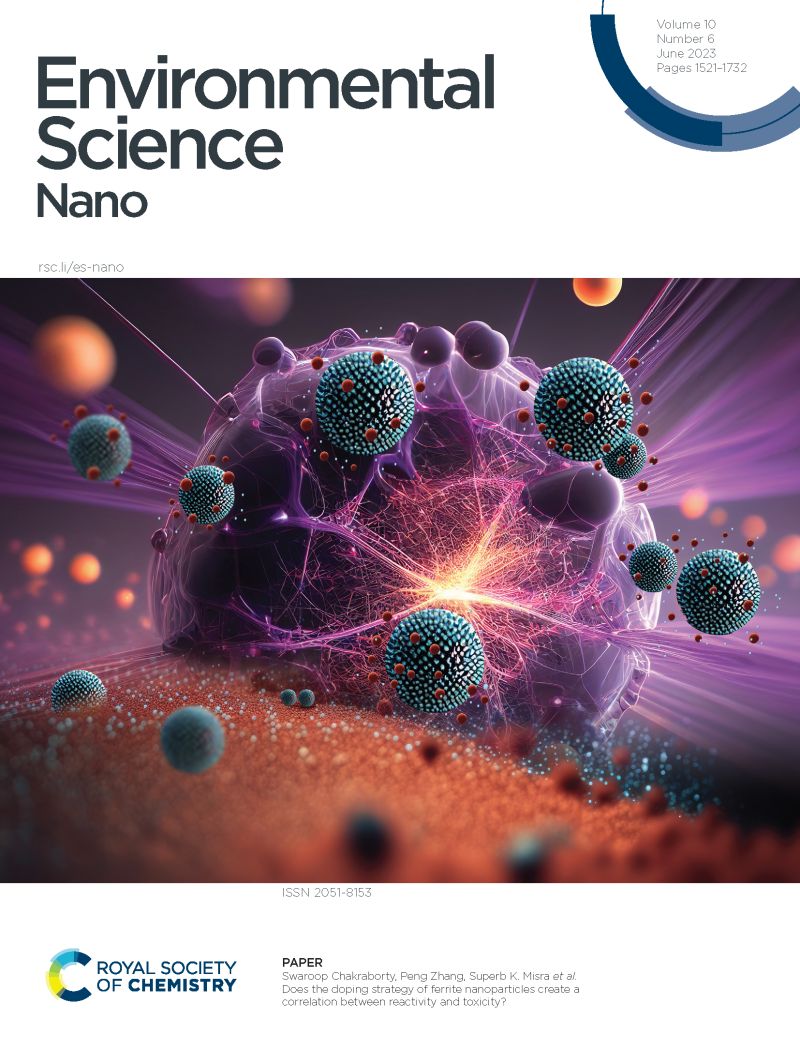Non-targeted lipidomics reveals the distinct metabolic mechanisms of nZnO and Zn ions in fish liver
IF 5.8
2区 环境科学与生态学
Q1 CHEMISTRY, MULTIDISCIPLINARY
引用次数: 0
Abstract
The toxicity of environmental pollutants is often manifested through metabolic disruptions and damage to detoxification organs. However, current understanding is insufficient to explain the physiological response mechanisms of metabolically abnormal fish exposed to secondary pollutants in complex natural environments. This study established a fish model with non-alcoholic fatty liver to evaluate the effects of Zn oxide nanoparticles (nZnO) and Zn²⁺ on physiological metabolism using untargeted lipidomics and bioimaging techniques. Nile red and hematoxylin and eosin (H&E) staining indicated that increased Zn levels reduced the number of lipid droplets (LDs) and hepatocyte vacuolization in the livers of groupers. Non-targeted lipidomics, employing an unsupervised K-means clustering algorithm, identified key lipid profiles that differentiated the effects of nZnO and Zn, including TG (16:0/16:1/18:1), PC (18:2/22:6), TG (18:2/18:2/22:6), SM (d18:1/24:1), and TG (16:1/18:1/18:2). The increased content of SM (d18:1/24:0) indicated that fish liver cells internalized nZnO via lipid raft structures on the cell membrane, a process distinct from Zn ion uptake. Moreover, nZnO/Zn treatments significantly activated lipolysis regulation in fish liver experiencing oxidative stress. This study contributed to the use of non-targeted lipidomics to identify differential biomarkers of nZnO and Zn, as well as their compensatory mechanisms in metabolically abnormal fish. These findings provide novel insights into the effects of nanometal exposure on aquatic animal health in complex environments.求助全文
约1分钟内获得全文
求助全文
来源期刊

Environmental Science: Nano
CHEMISTRY, MULTIDISCIPLINARY-ENVIRONMENTAL SCIENCES
CiteScore
12.20
自引率
5.50%
发文量
290
审稿时长
2.1 months
期刊介绍:
Environmental Science: Nano serves as a comprehensive and high-impact peer-reviewed source of information on the design and demonstration of engineered nanomaterials for environment-based applications. It also covers the interactions between engineered, natural, and incidental nanomaterials with biological and environmental systems. This scope includes, but is not limited to, the following topic areas:
Novel nanomaterial-based applications for water, air, soil, food, and energy sustainability
Nanomaterial interactions with biological systems and nanotoxicology
Environmental fate, reactivity, and transformations of nanoscale materials
Nanoscale processes in the environment
Sustainable nanotechnology including rational nanomaterial design, life cycle assessment, risk/benefit analysis
 求助内容:
求助内容: 应助结果提醒方式:
应助结果提醒方式:


